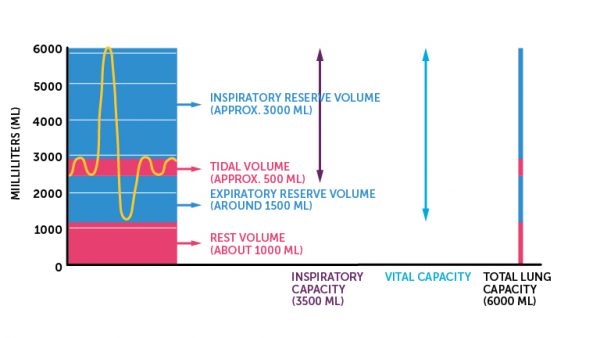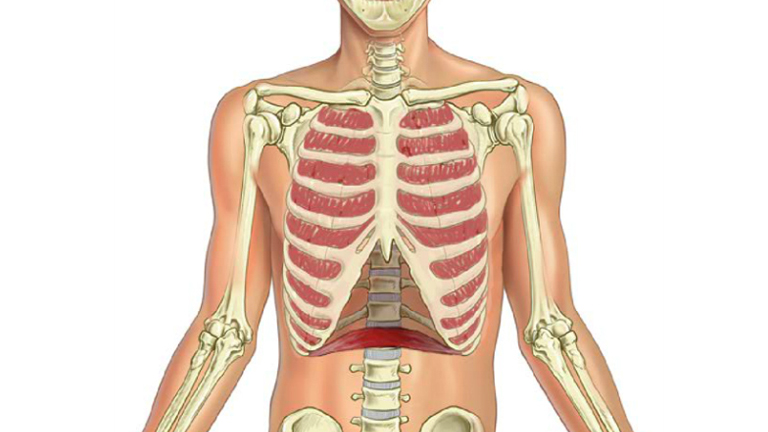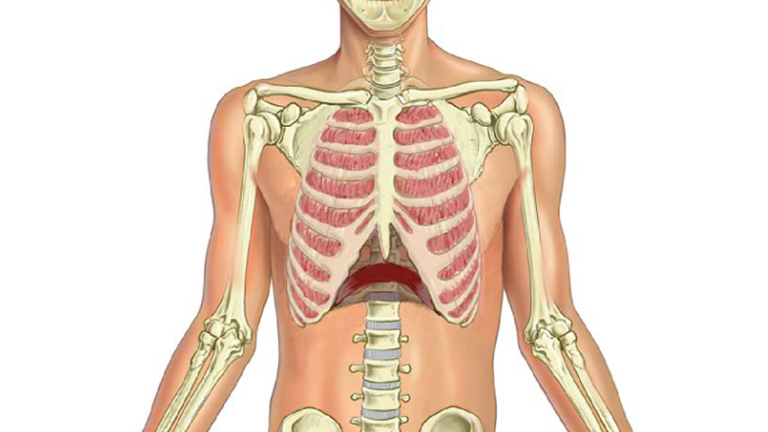Breathing is an active process using energy during inspiration when the diaphragm and intercostal muscles contract. The diaphragm pulls down towards the abdomen, and the intercostal muscles cause the chest to move outwards therefore expanding the thorax (Fig. 8). This increased volume in the thorax and results in the negative pressure in the lungs required to draw air into them.
Breathing out, however, is a passive process. Energy is not required because as the muscles relax, back to their resting length the lungs recoil due to their elasticity. In addition, both the surface tension inside and the elastic fibers outside of the alveoli also participate in lung tissue contraction. Overall this creates the positive pressure when the lung is compressed, and the air in the lungs is forced out.
During each breath 500 ml (½ liter) of air (Fig. 9) is inhaled, and to the same volume is exhaled. This volume is called the tidal volume. However this volume of air is not completely replaced for every breath rather a proportion of air is replaced (see below).
During a forced expiration it is possible to expire approximately 1500 mls of air, this is called the expiratory reserve volume. Even then there is still about 1000 ml of air left in the lungs This is the residual volume (Fig. 9).
After inspiring normally, with effort it is possible to inspire another 3000 mls of air (the inspiratory reserve volume).
The tidal volume, inspiratory reserve volume and expiratory reserve volume is called the total vital capacity (Fig. 9) and indicates the total volume of air available in the lungs. The sum of all the different volumes, i.e. tidal volume, inspiratory reserve volume, expiratory reserve volume and residual volume of the lungs corresponds to the total lung capacity.
Using a vitalograph or spirometer it is possible to carry out respiratory tests on lung function. The forced vital capacity (FVC) is the volume of air that can be expired during a forced expiration. The forced expiratory volume expired in one minute or FEV1 is another indicator of lung dysfunction. Normally, you are able to blow out 80% of this volume in one second.
Question: Do you remember the difference?






